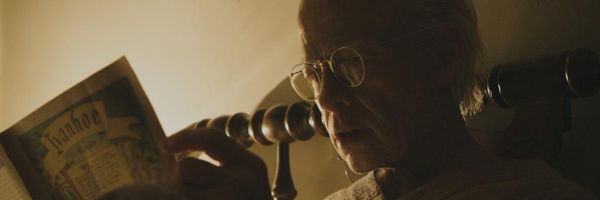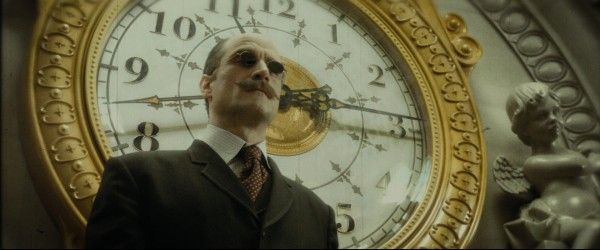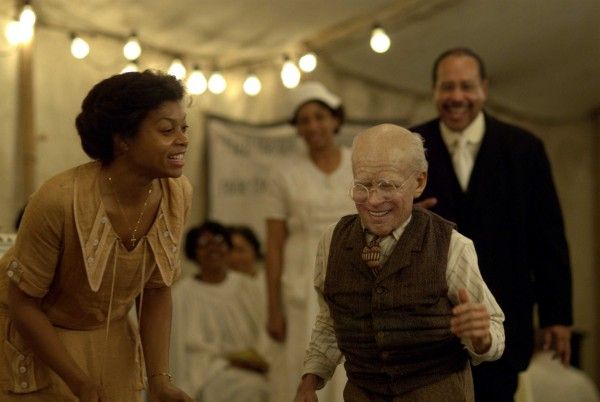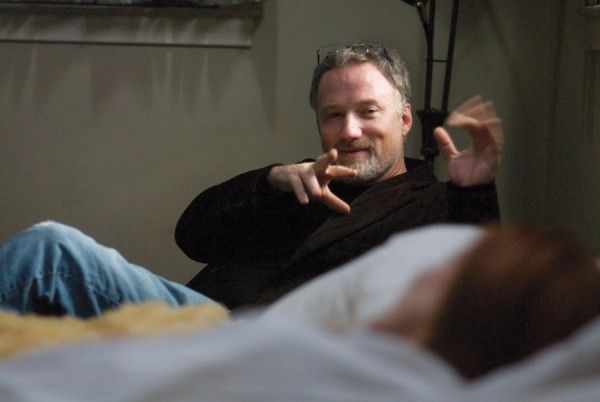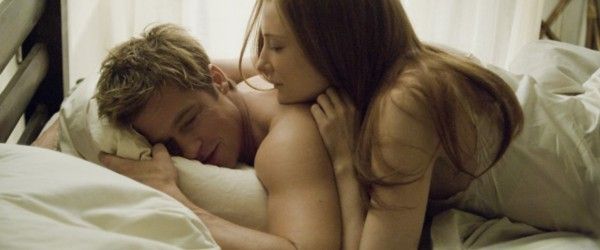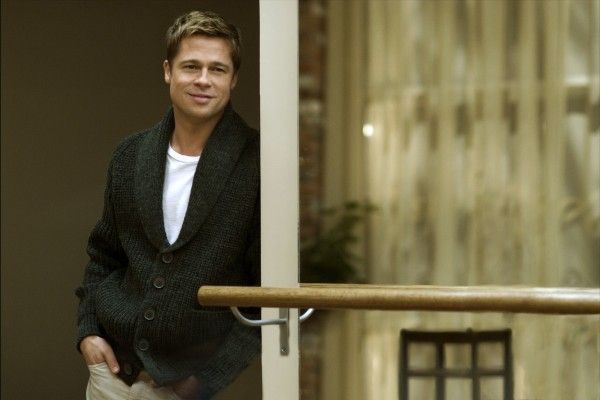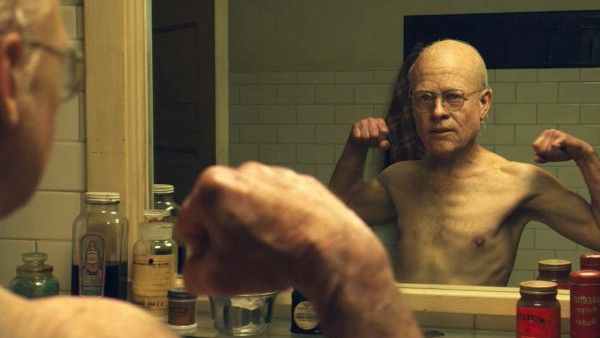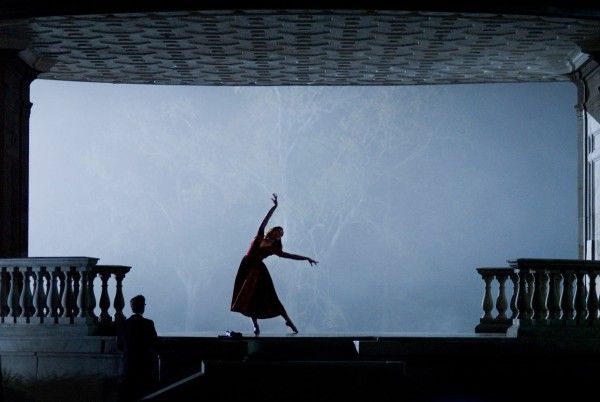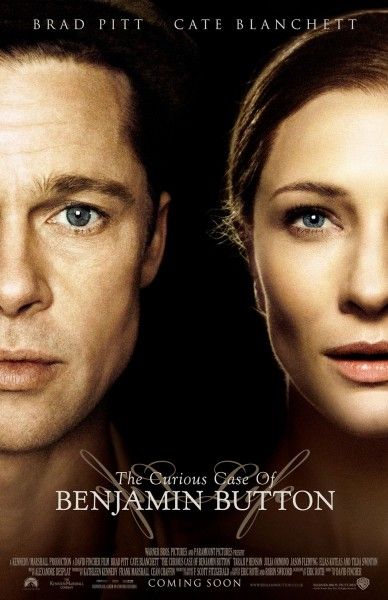The Curious Case of Benjamin Button is, at first glance, a unique entry in director David Fincher’s filmography. It’s an epic romance of sorts; a sweeping love story told through the ages, one which would appear to be at odds with what many view as a cold and cynical worldview that permeates Fincher’s other films like Se7en, Fight Club, or Zodiac. But upon further inspection, The Curious Case of Benjamin Button fits right in with the rest of Fincher’s darker films, as it’s really the story of a man whose entire life is surrounded by the reminder of death.
Benjamin Button hit theaters on December 25, 2008—almost exactly a decade ago—and was the biggest hit of Fincher’s career until Gone Girl, grossing over $330 million worldwide. It received mostly positive reviews and was nominated for 13 Oscars, winning three for Art Direction, Makeup, and Visual Effects. It almost certainly paved the way for Fincher to next make The Social Network, another successful Oscar-winning film, but actually creating The Curious Case of Benjamin Button was arduous, and the road to getting the film off the ground in the first place was a decades-long journey.
The Curious Case of Benjamin Button itself is based on a short story in an F. Scott Fitzgerald book published in 1922, and the central premise caught Hollywood’s attention in the late 1980s: the story of a man born old who ages backwards and dies young.
The first director attached to the project was Frank Oz, with Martin Short attached to star. But after working on the script for a few months for Universal Pictures, Oz left the project. He couldn’t quite crack how to turn this short story into a compelling drama, as the central premise lacked significant conflict.
So Universal’s president of production at the time, Casey Silver, next turned to screenwriter Robin Swicord, asking her to attempt an adaptation. She turned in a first draft in January 1990 and her contribution was so substantial that on the finished iteration of the film directed by Fincher, Swicord received a “Story by” co-credit. Producer Kathleen Kennedy says in the documentary The Curious Birth of Benjamin Button, included on the Criterion Blu-ray of the film, that credit is due to Swicord for cracking the thematic heart of the adaptation:
“I think Robin deserves an incredible amount of credit for taking this short story and reinterpreting the thematic ideas behind what it means for a man to age backwards and what that new perception on life might be."
Once Swicord wrote her draft, Universal approached Steven Spielberg about directing the film with Kennedy producing. As she explains, they had a major movie star eyed for the lead role:
“Steven gave the project very serious consideration for about a year. We did some read-throughs with actors, Tom Cruise was somebody that we were very serious about and he came over to Steven’s house for a read-through with several other actors. And then in the course of that year we were also working on Schindler’s List and Jurassic Park, obviously two very different but two very big projects. Steven ultimately decided he was gonna do those two projects back to back so he stepped away, then for a year or two it languished. Right around 1991, 1992, Frank [Marshall] and I segwayed out of running Amblin and formed our own company and we set up a new deal at Paramount, and this was the first project under our new banner of Kennedy/Marshall that we set up.”
So Kennedy and Marshall set about trying to find a new director for Benjamin Button, and meanwhile producer Josh Donnen took an interest in Fincher’s earlier work and decided to send him the Swicord script. Fincher explains his first contact with the script on the Benjamin Button Blu-ray:
“The first time I read the script, I think it had been floating around for a couple years. I think Spielberg had abandoned it at that time, Tom Cruise had abandoned it, and Josh Donnen took an interest in some of the early stuff that I’d done and sent it to me. I don’t know if it was like a taste barometer but it came highly, highly recommended… It was written by Robin Swicord and it was a beautiful script, but it sort of hinged on the audience’s affinity for and knowledge of jazz, which as a betting man in Hollywood that’s not really something I’m willing to put it all down on (laughs). So I appreciated it, I thought it was moving and beautiful, but it wasn’t the kind of thing that I said, ‘Before you die [you must make this movie]’, I just thought someone will do really well with this if they can ever figure out how to do it.”
The stumbling block was how to convincingly age the central protagonist. When Fincher was approached early on, he says they spoke with makeup effects artists like Stan Winston, but the amount of makeup needed to transform the actor would result in a massive—and cost prohibitive—shooting schedule. The other idea at the time, to make the film with five or six different actors playing the lead role, also was not ideal.
Kenney and Marshall kept trying to get the film made throughout the 1990s, with Swicord continuing to do revisions on the screenplay. In 1995, Polish filmmaker Agnieszka Holland (Europa, Europa) became attached to direct before departing only three months later. Then in 1998, Ron Howard signed on to direct fresh off the Oscar-winning success of Apollo 13 two years earlier. Swicord continued to hone the script while John Travolta was eyed to star, but Howard also ultimately left.
In March 2000, fresh off the immense critical success of his feature debut Being John Malkovich, Spike Jonze was hired to direct the adaptation. As Kennedy explains, Jonze’s take was much different:
“That was a radically different movie. That was much quirkier. I would throw it into sort of the Coen Bothers sensibility. More of a quirky comedy.”
The summer after Jonze was hired, Eric Roth—the Oscar-winning screenwriter behind Forrest Gump—was tasked with taking a crack at the script, taking over for Swicord. Shortly after Roth came on, Jonze left the project. This was also around the time the project came back into Fincher’s purview, as he explains:
“[Spike] talked about making it a much more intimate movie. I think it was at that moment in time that Sherry Lansing, who was running Paramount, hired Eric Roth. I don’t think it was against Spike’s wishes, but I’m not so sure he was involved in the decision at all, and I think he felt like he couldn’t be involved in something that he wasn’t charting the course of. I remember we had lunch and I said to him, ‘You know, Eric Roth’s talented. Before you give this up you may wanna wait until you read the script.’”
When Roth came in, he did his due diligence and tried to find out why Fitzgerald wrote the short story in the first place, to see if there was more thematically he could dig into. As he explains, he found the results underwhelming:
“To me the idea of this guy aging backwards was a lovely conceit. Other than that, the storytelling was not, to me, as interesting. Not to knock Fitzgerald, it was kinda spoofy and I felt there might be something a little more you could take away from it than that.”
Fincher got a call to come in and meet with Roth, Kennedy, and Marshall to talk about potentially directing the film again after Jonze left the project. After agreeing to push the issue of how, technologically, the movie could be made aside, the group then simply discussed life. Fincher describes it as the ideal Hollywood meeting:
“The thing I remember most about the first meeting was the first thing out of everybody’s mouth was, ‘How do you do this? How do you make a guy who’s four years old and he looks like he’s 85 and take him to being six months old and breathing his last breath?’ And because my background initially was at Industrial Light & Magic I’ve learned that initially in that situation you always lie. So I said, ‘That’s the least of our problems, don’t worry about that.’ (laughs)
So we started to have this conversation about everything else other than that with no one having any idea of what that would take. But it was one of these meetings that you always hope to have when you’re discussing the idea of setting sail on a film. You hope that you have a conversation with the writer and the producers where you’re talking about first kisses. We ended up talking about making out for the first time, first hangovers. It was a really interesting round robin of people talking about their lives and I thought that’s kind of what this movie, I think, will do for people. I think it’s the kind of movie that puts you in touch, in an odd way, with how you define yourself or how you were defined by certain moments in time, and what that stuff really means to us all."
That and death, of course. When Fincher began seriously considering directing the film, he turned to his frequent collaborator Brad Pitt to star. Pitt had been mentioned as a potential lead for Button at various times before, and the actor recalls on the Blu-ray the first time he and Fincher discussed it:
“This thing had been in my periphery for years at this point. It had come in and gone, and I think it was more about the technological hurdles at that time instead of just using different actors—I think that was getting wearisome at this point. And then it landed in Fincher’s lap and Fincher and I are always talking about a possible project or two, and I really didn’t think he was serious about this one. I thought it was a nice idea given the Fincher that I know, that is seldom revealed to the outside world, but I really didn’t think he’d pull the trigger.”
But Fincher convinced Pitt to read the script with death in mind, and it made all the difference:
“[Brad] read it and he said, ‘It’s kind of a love story isn’t it?’ and I said, ‘I don’t think so. I think it’s a death story. I think you should read it with that in mind. Remember this guy grows up in an old folks home, literally everybody who passes though his life dies.”
So Pitt was convinced to star on the condition that he get to play the character through the entire film, and shortly thereafter Fincher signed Cate Blanchett to co-star. Then it came down to how, exactly, Fincher would age and de-age Pitt. The project was going to be so expensive that it was set up as a co-production between Paramount Pictures and Warner Bros., and after cutting the first draft of Roth’s script down to roughly 200 pages, Paramount agreed to pay for a visual effects test.
The test was created to show how they would digitally replace the head of a body double with a CG, aged version of Brad Pitt. And while Paramount was impressed by the footage, they decided the film was going to be too expensive by about $75 million, Fincher estimates. So Pitt moved on and Fincher went and made Zodiac, also at Paramount. While Fincher was making Zodiac, he says they were still negotiating how much it would cost to really make Benjamin Button, so the movie didn’t entirely fall apart.
In 2005, Fincher and Co. had decided to move the setting of Roth’s script from Baltimore to New Orleans to take advantage of the Louisiana tax incentives, as shooting in Baltimore was going to make the film that much more expensive. So Roth set about reworking the script for a New Orleans setting. And then Hurricane Katrina hit.
Luckily, all the locations that Fincher had settled on for Button were still standing, so he and his team went to Paramount and told the studio they’d still like to shoot in New Orleans, even though the city had just gone through a catastrophic natural disaster. But Fincher credits Pitt’s passion for shooting in New Orleans for reigniting the project, and filming finally commenced on November 6, 2006.
Production didn’t wrap until September 2007, at which point the long post-production process began as Fincher and his team set about capturing Pitt’s facial expressions and performance to be inserted into the scenes involving a body double. The technological innovation used to complete this process (and win an Oscar along the way) was cutting edge at the time, and obviously unavailable to filmmakers in previous iterations of the project.
Indeed in many ways it seems fateful that The Curious Case of Benjamin Button took so long to get made, and yet came at just the right time, as technology made it possible for one actor to inhabit the role for the film’s entire run. Moreover, Fincher’s take on the story—one of an epic romance centered around the concept of death and mortality—is unique to his sensibilities. While it’s fun to imagine how different Spielberg or Jonze’s versions of this story would have been, ultimately Fincher’s adaptation—while imperfect—remains a fascinating feature. Both inside and out.
*References pulled from The Curious Case of Benjamin Button Criterion Collection Blu-ray and David Prior’s documentary The Curious Birth of Benjamin Button.

